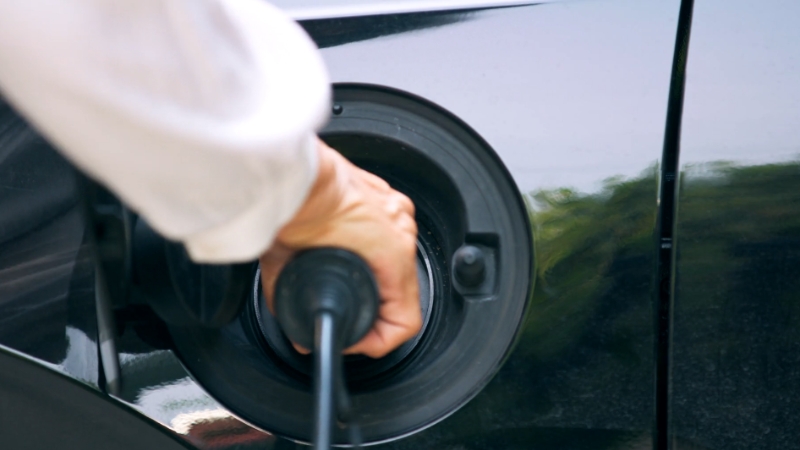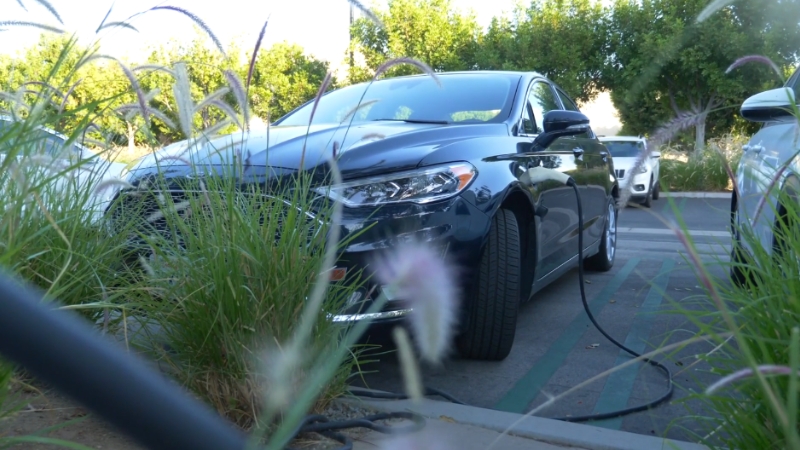In 2025, U.S. buyers can get up to $7,500 off a new electric vehicle at the dealership through the federal Clean Vehicle Credit, and up to $4,000 off a used EV. Colorado offers an additional $5,000 state rebate, California gives between $2,000 and $7,500, and New Jersey adds $4,000 plus a full sales tax exemption.
The federal government also covers 30% of home charger installation costs, up to $1,000, while local utilities like Austin Energy and Con Edison offer rebates of $500 to $1,200 for home chargers.
Income caps and vehicle price limits apply, like $150,000 for individuals and $80,000 max for trucks/SUVs—but millions of drivers still qualify. With public charging expanding through the NEVI program and most rebates now applied instantly at purchase, switching to an EV in 2025 can cut your costs by $10,000 or more if you stack your incentives.
The Federal Picture: Still a Heavy Hitter in 2025
The Big One: Federal EV Tax Credit (And Its New 2025 Upgrades)
The original federal EV tax credit, a carryover from the late 2000s, got a major facelift under the Inflation Reduction Act. In 2025, it’s still alive and well, but with tighter rules and a more structured path to qualification.
Here’s what’s going on:
- Up to $7,500 credit for new EVs – This amount depends on where the vehicle and battery components are sourced and assembled. There’s a checklist now. If your car meets the U.S.-assembly and battery-sourcing rules, you get the full credit.
- Income caps – If you make more than $150,000 (single filer) or $300,000 (joint), you’re out of luck. That keeps the benefit targeted toward middle-income buyers.
- Vehicle price limits – Trucks, SUVs, and vans need to be under $80K; sedans and smaller cars, under $ 55 K.
- Instant rebate at the dealership – Here’s where things get more real: starting in 2024, buyers could take the credit as a point-of-sale discount, rather than waiting until tax season. That’s made 2025 feel like the year when the EV credit finally matured.
So, say you walk into a dealership and find a U.S.-built Chevy Equinox EV for $42,000. If you qualify, the dealer just knocks $7,500 off right then and there. No waiting. It’s cleaner, faster, and a lot more motivating.
State-Level Incentives: A Total Patchwork (But Some Real Gems)

Some go all in on cash rebates, utility discounts, and free HOV lane access, while others play it cool or sit it out entirely.
State
EV Rebate/Tax Credit
Extras
California
$2,000–$7,500 via Clean Vehicle Rebate Program
Free HOV lane access, state charger rebates
Colorado
Up to $5,000 rebate
Stacking with a federal rebate allowed
New Jersey
$4,000 point-of-sale rebate
No sales tax on EVs
Oregon
Up to $7,500 combined rebate
Charger incentives through Energy Trust of Oregon
Illinois
$4,000 rebate
Low-income applicants get priority
Income-Based Incentives: More States Tuning In
Several states now scale their EV incentives based on income. For example, in California, a family of four making less than $60,000 may qualify for a $7,500 rebate, while a higher-income buyer gets far less or nothing.
There’s also a trend toward “equity-focused” programs: grants for EVs in pollution-heavy ZIP codes, extra support for rural buyers, and charger installation assistance for renters.
So if you’re thinking, “There’s no way I can afford an EV,” double-check your local program. You might be exactly who the program was designed to help.
Charger Support: No One Wants a Fancy Paperweight

It’s not enough to just get the car—people need to plug it in somewhere. Governments are pushing hard to make sure home charging doesn’t become a bottleneck.
Federal Charger Tax Credit (Back Again)
It quietly disappeared in the past, but it’s back and better now:
Utility Rebates (Often Overlooked)
EV Owners, Rejoice 🔋🚘
Turn your eco-friendly drive into cash this tax season. SCE offers a range of #EV rebates and rates that could add some extra green to your wallet. 💸 Tap the link for more info: https://t.co/75mSbgY5Ss#ElectricVehicles #Rebates #TaxSavings— SCE (@SCE) April 9, 2024
Electric companies are handing out rebates like candy, but not everyone knows to ask.
Here’s what you might find:
Example: If you’re in Austin, Texas, Austin Energy gives up to $1,200 to install a Level 2 charger at home. And if you agree to their managed charging program? You get an extra credit on your bill every month.
Used EVs: Getting Some Love in 2025
View this post on Instagram
The used EV market has exploded in the past couple of years, especially as lease returns and older models cycle back into dealerships. The government caught on.
The Used EV Tax Credit
Launched in 2023 and refined since, the federal EV tax credit offers:
It’s not flashy, but it’s changing the game for people who couldn’t buy new. Plus, used Teslas, Bolts, and Nissan Leafs are more common now, and still solid.
City and County Programs: Small but Mighty
@ev_initiative Smart Investors Focus on the Future 🚀 ⚡ EV adoption is booming, and infrastructure is catching up! 📍 Strategic location in LA, near major highways 💡 Multiple revenue streams, including charging fees & more 🔌 Invest today and be part of the transition to clean energy #evinitiative #evcharging⚡️ #evchargingbusiness #losangeles #investinev #evcharging ♬ original sound – EV Initiative
Not every local government can throw money at the problem, but the creative ones are finding other ways.
Examples
- Portland, OR: Offers free curbside charging permits for people without driveways
- Los Angeles, CA: EV carshare programs in underserved neighborhoods
- Baltimore, MD: Discounted parking for EVs in municipal garages
Some cities are even adjusting building codes to require new homes or apartments to be EV-ready, meaning the wiring is pre-installed. No big renovations later—just plug in.
What About Trucks and SUVs?
Let’s be honest: not everyone wants a compact EV hatchback. Rural drivers, contractors, and large families need something bigger. And the market’s finally catching up.
Incentives Are Adapting
States like Wyoming, Montana, and Texas are now adjusting their rebates to include full-size pickups and SUVs. Some require a plug-in hybrid minimum range (like 40 miles), but many go all-electric.
The Ford F-150 Lightning, Chevy Silverado EV, and Rivian R1T are all eligible for federal and state rebates as long as you stay under that $80,000 price cap. More trims are coming in 2025 that sneak just under the limit.
Renting or Leasing? You’re Not Left Out

For a while, it seemed like renters were left on the sidelines—no garage, no charger, no rebate. That’s changing.
Lease-Friendly Policies
If you’re in a city apartment and lease an EV, you could see $100/month in savings compared to a similar gas model, between fuel and maintenance.
A Quick Word on Charging Infrastructure
No, the government won’t install a charger in your driveway (unless you apply for a local program). But a lot of public money is going into national charging networks, especially along highways and in rural corridors.
The NEVI program (National Electric Vehicle Infrastructure) continues to fund new stations every month. Most are required to:
By the end of 2025, the U.S. expects to have over 1 million public EV chargers, with a mix of fast and Level 2 options.
What to Watch for Later

A few things are still shaking out this year, and they could shift the playing field:
Wrapping Up
Here’s the bottom line: in 2025, governments across the U.S. are doing more than ever to make EVs a realistic choice, not just a luxury or a moral high ground. But the trick is knowing where to look and what you qualify for.
A few quick tips:
- Stack your incentives: You can combine federal, state, utility, and sometimes local programs. That adds up fast.
- Ask your electric utility: They often have rebates or billing plans that most people overlook.
- Don’t ignore used EVs: That $4,000 credit makes them crazy affordable.
- Check the dealership: Many incentives are now built into the financing or point-of-sale price. Don’t be shy, ask.
The EV train has left the station. But there’s still plenty of room to hop on, especially if you’re smart about where you buy, what you drive, and which programs you tap into.
So yeah, it’s a good time to go electric. And finally, it’s not just for early adopters or tech bros, it’s for regular drivers too.
